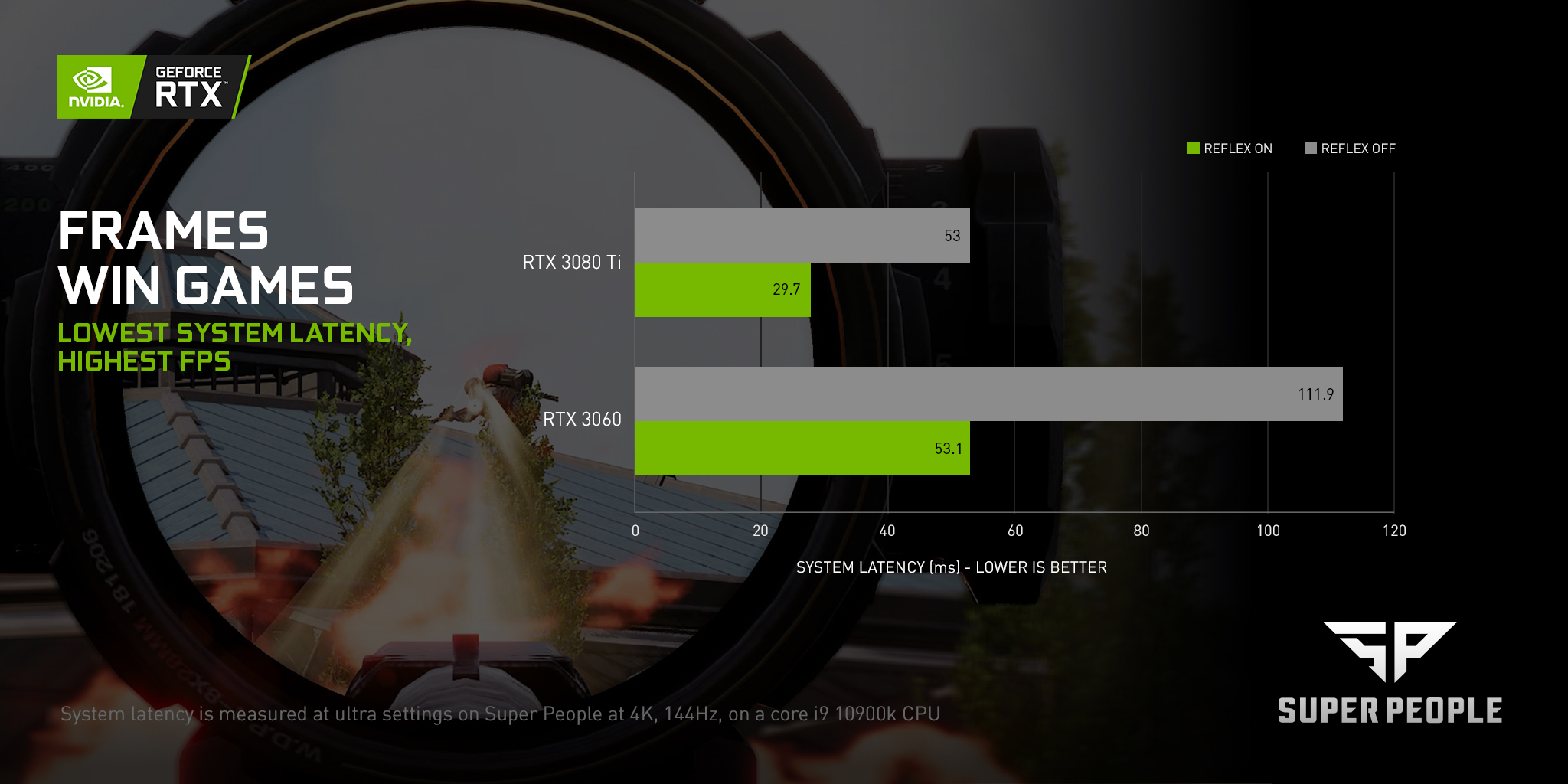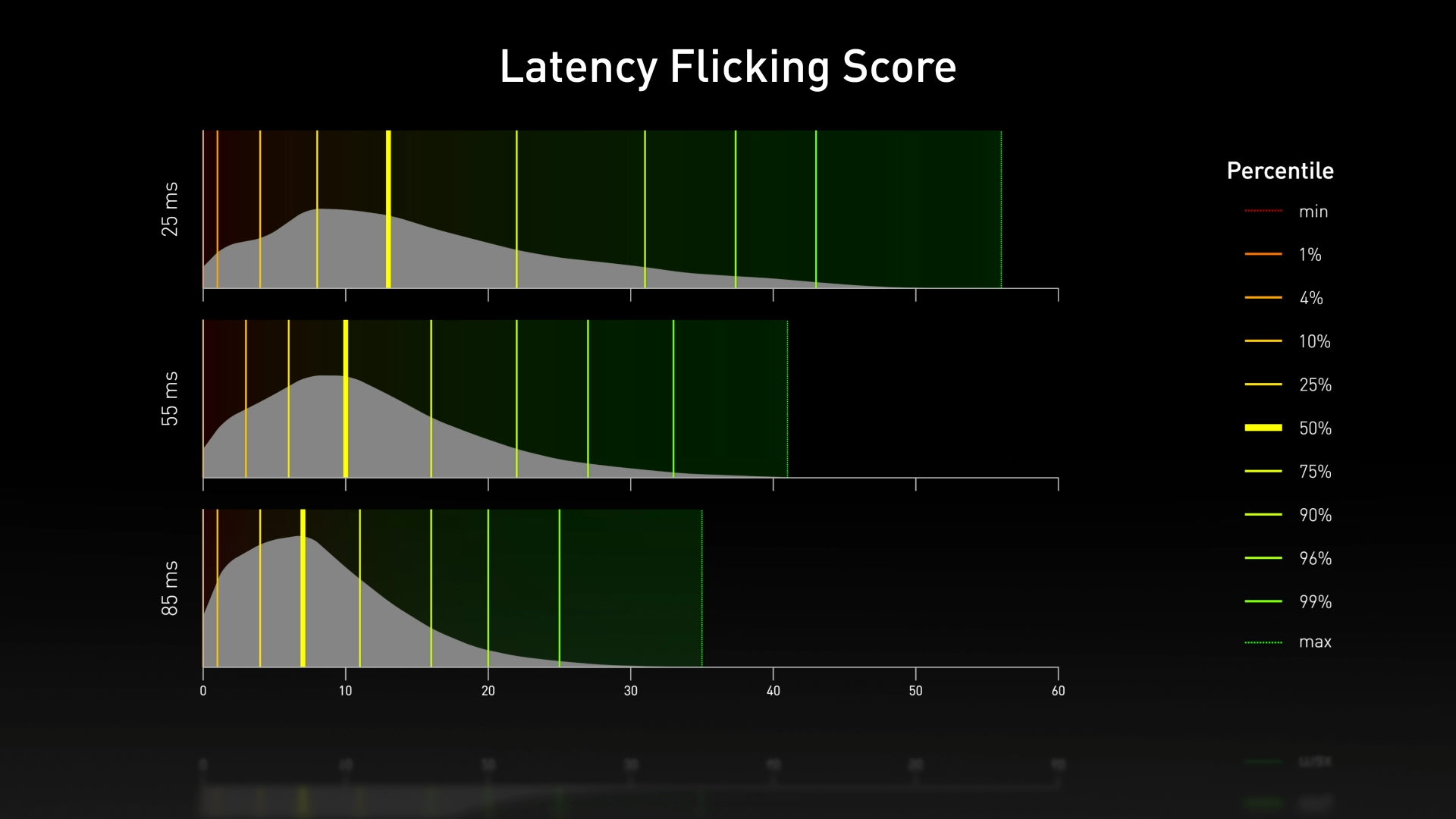NVIDIA Reflex: Available Now In iRacing And SUPER PEOPLE’s Beta. Coming Soon To Shadow Warrior 3
NVIDIA Reflex is a must-have in games, reducing system latency so your actions occur quicker, making you more competitive in multiplayer matches, and making single-player titles more responsive. It’s available in the most popular multiplayer and esports games, supported on GeForce graphics cards dating back to the 900 Series, and it takes only a single click to enable.
Last month, we announced a whole load of games adding NVIDIA Reflex, saw God of War launch with support, and announced new hardware leveraging NVIDIA Reflex so you can measure and optimize system latency. Now, we have 3 new titles and a new Reflex display to enhance your gameplay and experiences.
NVIDIA Reflex Comes To Even More Games
NVIDIA Reflex is quick and easy for developers to add to their titles thanks to SDKs, plugins, and extensive documentation. The most played multiplayer games and award-winning single-player games have made players’ experiences better with NVIDIA Reflex, and this month sees the launch of NVIDIA Reflex in another 2 titles, with yet more on the horizon.
iRacing
iRacing is the world’s premier online racing simulator, featuring real world cars and tracks digitally replicated with millimeter accuracy. It is used for training by the world’s best race car drivers, including professional racers from NASCAR, Indycar, sports cars, off road trucks, World of Outlaws and Grand Prix circuits. And allows people from all over the world to participate in online races and esport championships.
Because precision and milliseconds matter, iRacing has added support for NVIDIA Reflex, reducing system latency to deliver the most responsive driving experience. Head to Options > Graphics > Display to enable NVIDIA Reflex and reduce system latency by up to 20%:
“When designing a physical race car, we spend considerable resources assuring that steering, throttle, and braking systems are highly responsive to the driver’s commands,” said Chris Gilligan, Chief Information Officer, Competition & Engineering for Joe Gibbs Racing. “For our iRacing esports teams, the same is true, but instead of engineering physical systems, we must ensure that driver inputs are fed into the simulation engine with minimal delay. Minimizing this latency between the driver control systems, the sim engine, and the video display are not only key for providing a sense of realism, but also allows drivers to hone their car control skills in a virtual environment.”
SUPER PEOPLE
Wonder Games’ SUPER PEOPLE has been a breakout hit on Steam - initially available for a short beta weekend, hundreds of thousands of gamers instantly flocked to its super-fun super-powered battle royale arenas, convincing the developers to leave SUPER PEOPLE online.
SUPER PEOPLE now benefits from the addition of NVIDIA Reflex and NVIDIA DLSS, giving GeForce gamers the definitive experience. See this awesomeness in action within the video below, captured from the beta.
Using NVIDIA Reflex, SUPER PEOPLE players can reduce their system latency by up to 50%, making them more competitive online, potentially leading to victory in the winner-takes-all arenas.
Shadow Warrior 3
Devolver Digital and Flying Wild Hog’s Shadow Warrior 3 arrives March 1st, giving gamers more ludicrous first-person action helmed by long-time protagonist, Lo Wang.
Chain Lo Wang’s finishers and spectacular moves with ease by enabling NVIDIA Reflex, letting you fight enemies instead of controls affected by system latency. And turn on NVIDIA DLSS to crank up your frame rate.
New G-SYNC NVIDIA Reflex Monitor Available Now
NVIDIA Reflex has become synonymous with esports - Reflex is present in the best competitive games, G-SYNC Monitors with Reflex have high refresh rates with excellent image clarity, and Gaming Mice with Reflex are primed to up your game both of which enable you to easily measure system latency.
This month sees the launch of a new 360Hz Reflex monitor that’ll help you reduce system latency and be more competitive.
To learn more about measuring system latency follow our guide here.
Automatic Latency Measurement Is Here!
Our latest GeForce Experience update is here, bringing automatic NVIDIA Reflex Analyzer configuration to the free app, making latency measurement a 1-click experience and incredibly easy to use. All you have to do is plug your mouse into the Reflex USB port on a NVIDIA Reflex monitor and hit Alt + R. Gamers can switch weapons, use weapons without muzzle flashes, and measure latency while they play the game.
The Reflex Analyzer flash indicator will now be controlled by GeForce Experience and shown when the performance overlay is enabled. Gamers with a Reflex Mouse will be provided full end to end system latency measurements, while gamers without a Reflex Mouse can still measure PC + Display Latency.
Open GeForce Experience to grab the new update, and install our latest Game Ready Driver while you’re there. Then, simply play a NVIDIA Reflex game.
System Latency Challenge
In December we teamed up with Meta and their popular aim trainer, Kovaaks, to give everyone a chance to jump in and feel the difference between high and low latency. We called it the System Latency Challenge.
The challenge was conducted at three latency levels: 85ms, 55ms, and 25ms in a random order per user. What we discovered surprised us.
First, Latency improves your score regardless of aiming skill. If we compare the percentile markers at 85ms, 55ms, and 25ms, each percentile shifts to the right as latency decreases. This shows that everyone’s scores improved with lower latency.
Second, lower latency unlocks player potential. Not only did the curve shift towards higher scores, the range of achieved scores increased. At 85ms, players scored between 0 and 35 points. At 55ms, players scored between 0 and 41 points. And at 25ms, players scored between 0 and 55 points. This shows that as latency decreases, a wider range of scores become possible.
Finally, lower latency can make difficult aiming tasks possible. In Latency Flicking, we saw that 7.5% of players couldn’t hit a single shot at 85ms, however at 25ms, only 4% couldn’t hit a shot.
More To Come
New NVIDIA Reflex games, monitors and mice are on the way, so stay tuned to GeForce.com to see the news when it drops.





